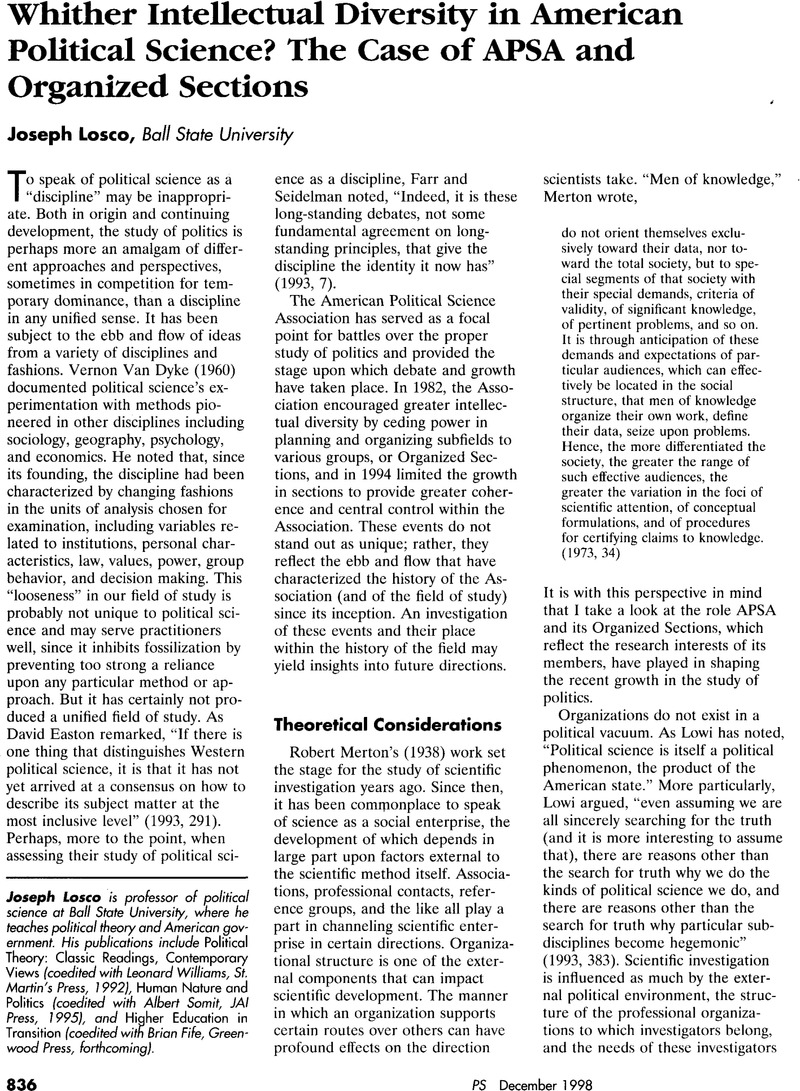Crossref Citations
This article has been cited by the following publications. This list is generated based on data provided by Crossref.
Pencek, Bruce
2000.
Internet Resources for Politics, Political Science, and Political Scientists.
Journal of Library Administration,
Vol. 30,
Issue. 3-4,
p.
293.
Grant, J. Tobin
2005.
What Divides Us? The Image and Organization of Political
Science.
PS: Political Science & Politics,
Vol. 38,
Issue. 3,
p.
379.
SIGELMAN, LEE
2006.
The Coevolution of American Political Science and the American Political Science Review.
American Political Science Review,
p.
1.
SIGELMAN, LEE
2006.
The Coevolution of American Political Science and the American Political Science Review.
American Political Science Review,
Vol. 100,
Issue. 04,
p.
463.





